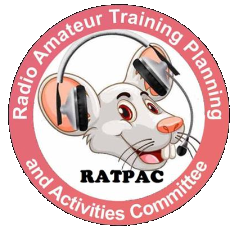The Federal Communications Commission (FCC) is seeking comments about changing the secondary allocation available to radio amateurs on 60 meters. The FCC issued a Notice of Proposed Rulemaking (NPRM) on April 21, 2023, that deals with the band. In a prior petition, ARRL The National Association for Amateur Radio® urged protecting the existing use of the band by amateurs when adding a new allocation adopted internationally.
Currently, radio amateurs in the US have access to five discrete channels on a secondary basis: 5332 kHz, 5348 kHz, 5358.5 kHz, 5373 kHz, and 5405 kHz. Users of these channels are limited to an effective radiated power (ERP) of 100 W PEP.
The FCC proposes to allocate 15 kHz of contiguous bandwidth between 5351.5 – 5366.5 kHz on a secondary basis with a maximum power of 15 W EIRP (equivalent to 9.15 W ERP). This allocation was adopted at the 2015 World Radiocommunication Conference (WRC-15).
The federal government is the primary user of the 5 MHz spectrum. The government’s manager of spectrum use, the National Telecommunications and Information Administration (NTIA), has expressed support for implementing the allocation as adopted at WRC-15. Doing so would result in amateurs losing access to four of the five discrete channels, and power limits would be reduced from 100 W ERP to 9.15 W ERP. However, it would provide access to a new contiguous 15 kHz band that includes one of the current five channels.
In 2017, ARRL petitioned the FCC to keep the four 60-meter channels that fall outside the new band, as well as the current operating rules, including the 100 W PEP ERP limit.
The ARRL petition stated, “Such implementation will allow radio amateurs engaged in emergency and disaster relief communications, and especially those between the United States and the Caribbean basin, to more reliably, more flexibly, and more capably conduct those communications.”
ARRL said that years of amateur radio experience using the five discrete channels have shown that amateurs can coexist with primary users at 5 MHz while complying with the regulations established for their use. The petition also stated, “Neither ARRL, nor, apparently, NTIA, is aware of a single reported instance of interference to a federal user by a radio amateur operating at 5 MHz to date.”
 In the NPRM, the FCC recognizes that Canada has already adopted 60-meter allocations and related rules that align with those proposed by ARRL. The Commission wrote, “Finally, we note that Canada has essentially implemented the same rules as ARRL has requested.”
In the NPRM, the FCC recognizes that Canada has already adopted 60-meter allocations and related rules that align with those proposed by ARRL. The Commission wrote, “Finally, we note that Canada has essentially implemented the same rules as ARRL has requested.”
The FCC proposed to allocate the 15 kHz bandwidth, but stopped short of making a proposal on whether the existing channels should remain allocated to amateur radio and what the power limitations should be. They requested comments on their proposal and the related channel and power issues.
Comments will be due 60 days after the NPRM is published in the Federal Register, which is expected within the next two weeks.












 Total views : 3287212
Total views : 3287212